-
Car Reviews
- All reviews
- Midsize SUVs
- Small cars
- Utes
- Small SUVs
- Large SUVs
- Large cars
- Sports SUVs
- Sports cars
- Vans
Latest reviews
- Car News
-
Car Comparisons
Latest comparisons
- Chasing Deals
Are plug-in hybrids the best of both worlds or the worst? Either way you’re paying a $20k premium over a regular petrol model – yet in some ways it might be worth it
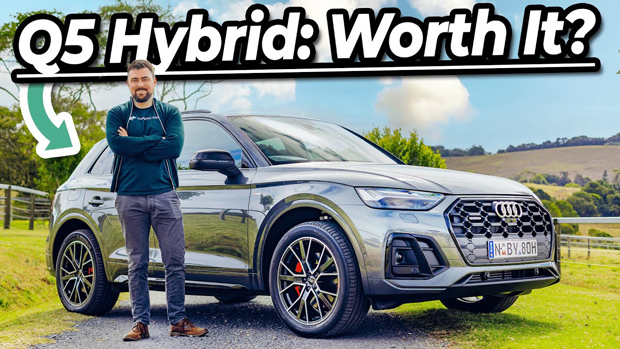
Like it or not, in 2023 we exist in a time of transition, with more people walking into showrooms every year and snapping up electric vehicles when they would have previously left with the keys to a petrol or diesel vehicle.
However, pure EVs still aren’t suitable for everyone and it’s in this space that Audi has seen to introduce the Q5 TT TFSIe, it’s first locally-sold plug-in hybrid in years.
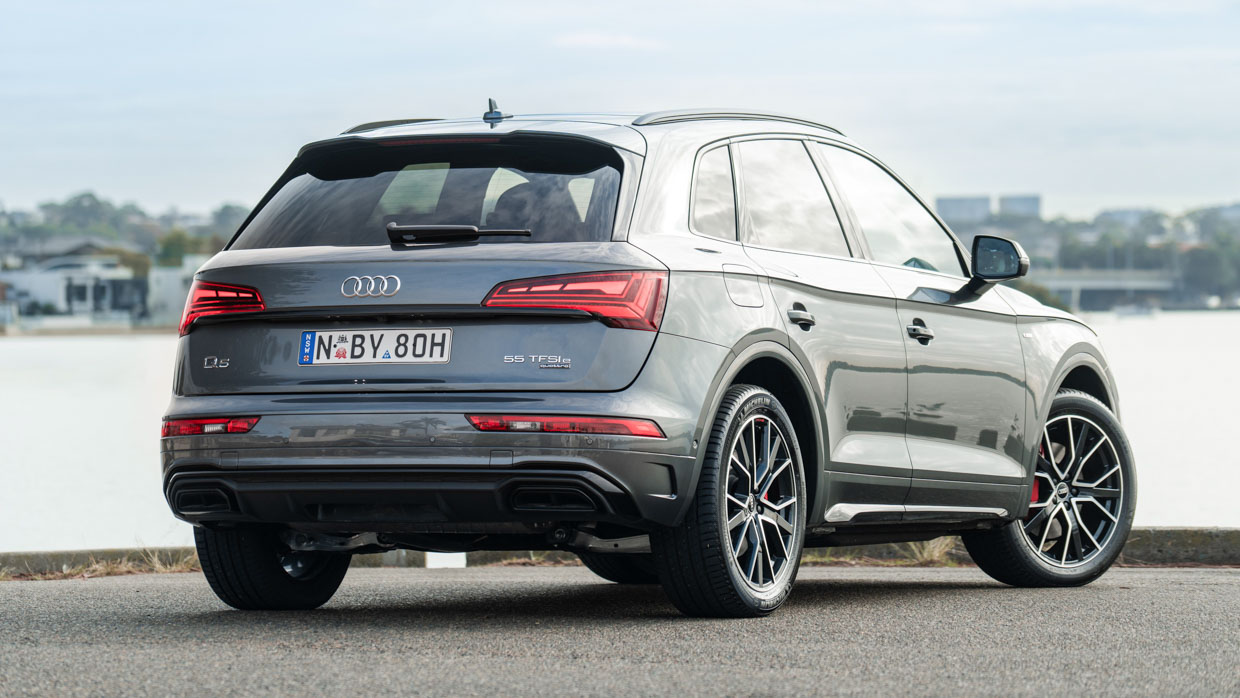
Audi is somewhat of a local pioneer in this space here in Australia, introducing the A3 E-tron back in 2015 and, later, a variant for the Q7. But while the brand’s PHEV variants have flourished over in Europe, what has been offered in the past have slowly become discontinued locally – until now.
The Q5 55 TFSIe is the first of two new Audi plug-ins planned for Australia, with the Q8 60 TFSIe booked to arrive later this year. More PHEVs could follow, at a time when key rival Mercedes-Benz has dropped the plug-in option for the new-gen GLC locally, claiming buyers are more keen to jump from pure internal combustion straight into fully electric options.
Audi, too, has a Q5-sized fully electric vehicle on the way in the form of the Q4 E-tron and while an exact date has yet to be set, the Q8 E-tron large SUV and E-tron GT sports sedan have already kicked off the EV onslaught locally.
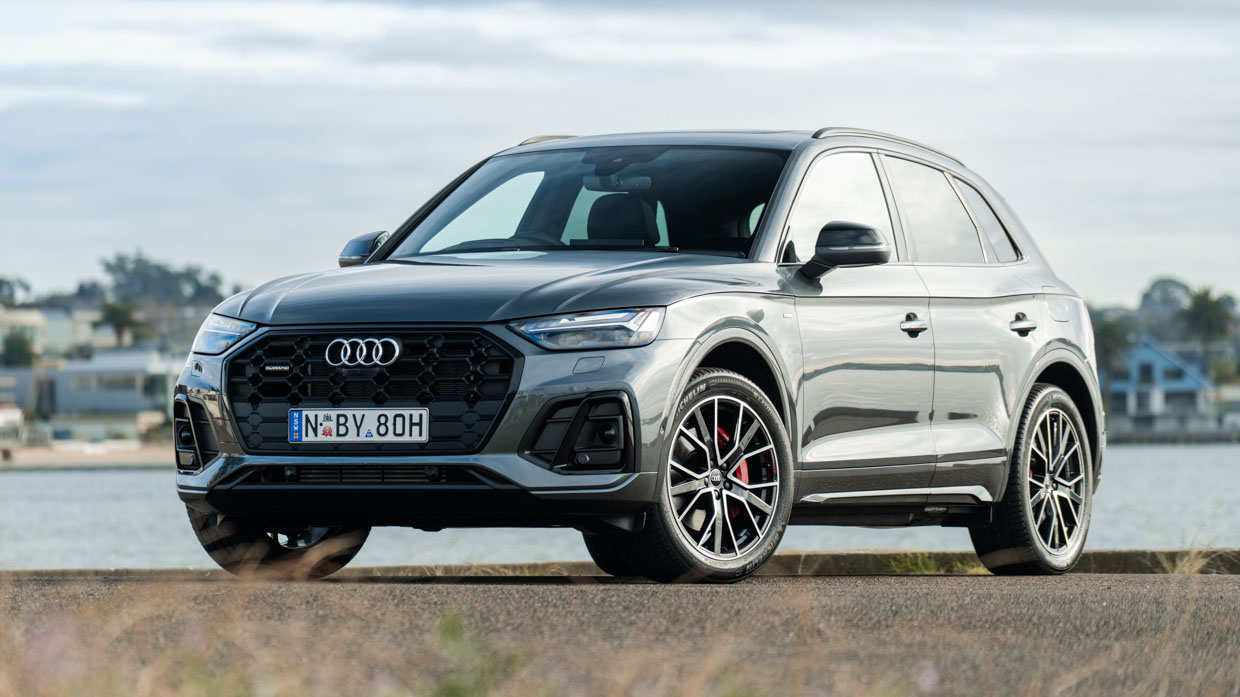
In terms of price, well, the Q5 55 TFSIe isn’t cheap. It starts at $102,900 for the traditional wagon body style and $110,200 for the Sportback, putting it $20,100 more expensive than the petrol-powered 45 TFSI Sport. Ouch.
That’s a pretty significant markup, though certainly not unheard of for a PHEV, with others in this segment such as the BMW X3 xDrive30e carrying a $13,900 premium over its petrol sibling.
Even the more affordable options such as the Mitsubishi Outlander demand an extra circa-$15k for its plug-in variants. For this reason alone, it’s perhaps understandable why Aussies have historically been hesitant to take up PHEVs.
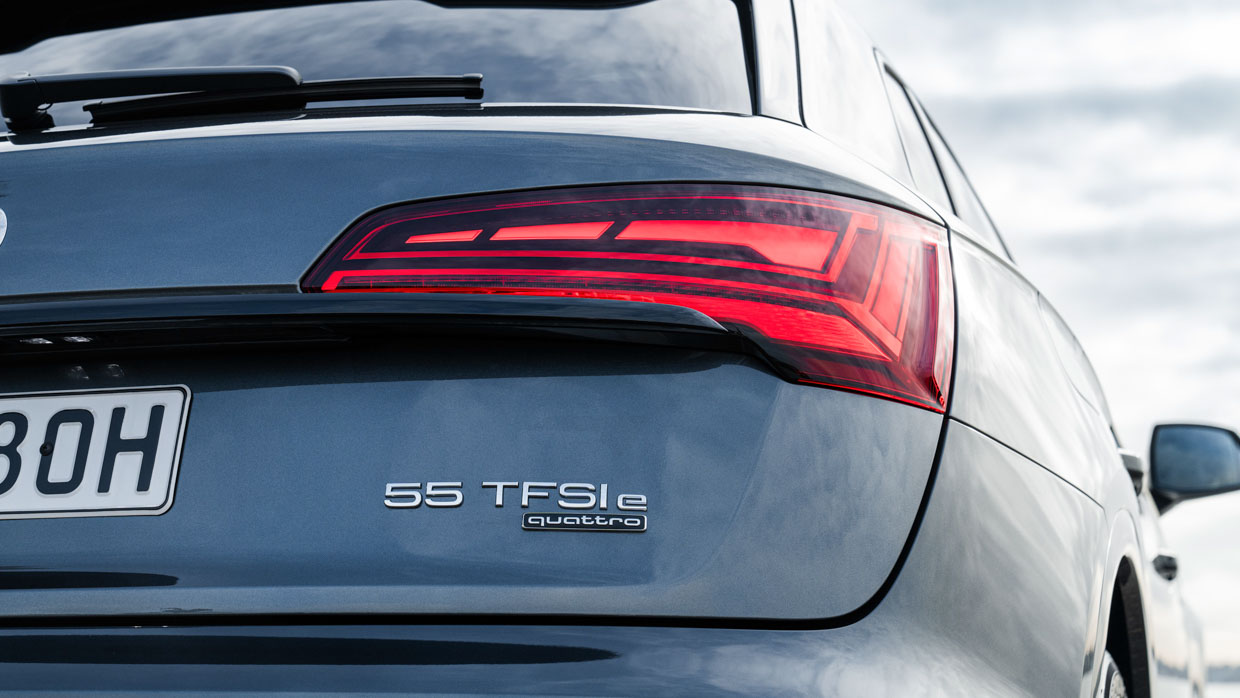
And even within the Q5’s own range, it’s hard not to look north to Audi’s highly praised SQ5 for an extra $8-10k. But then again, this plug-in is almost just as quick off the mark with a 0-100km/h time just 0.2 seconds slower than the aforementioned diesel V6-powered SUV.
Those in the know will be aware that the ‘55’ numericals are usually bestowed upon Audi’s comfortably quick V6 models. And while the Q5 may only have a four banger to fall back on once the battery runs flat, this variant is the more powerful of the two Q5 plug-ins available globally with a whopping 270kW and 500Nm at the ready.
Furthermore, when operating entirely independently from the combustion engine, the Q5 55 TFSIe can travel up to 55km (WLTP) in the wagon version we tested, or 53km in the Sportback.
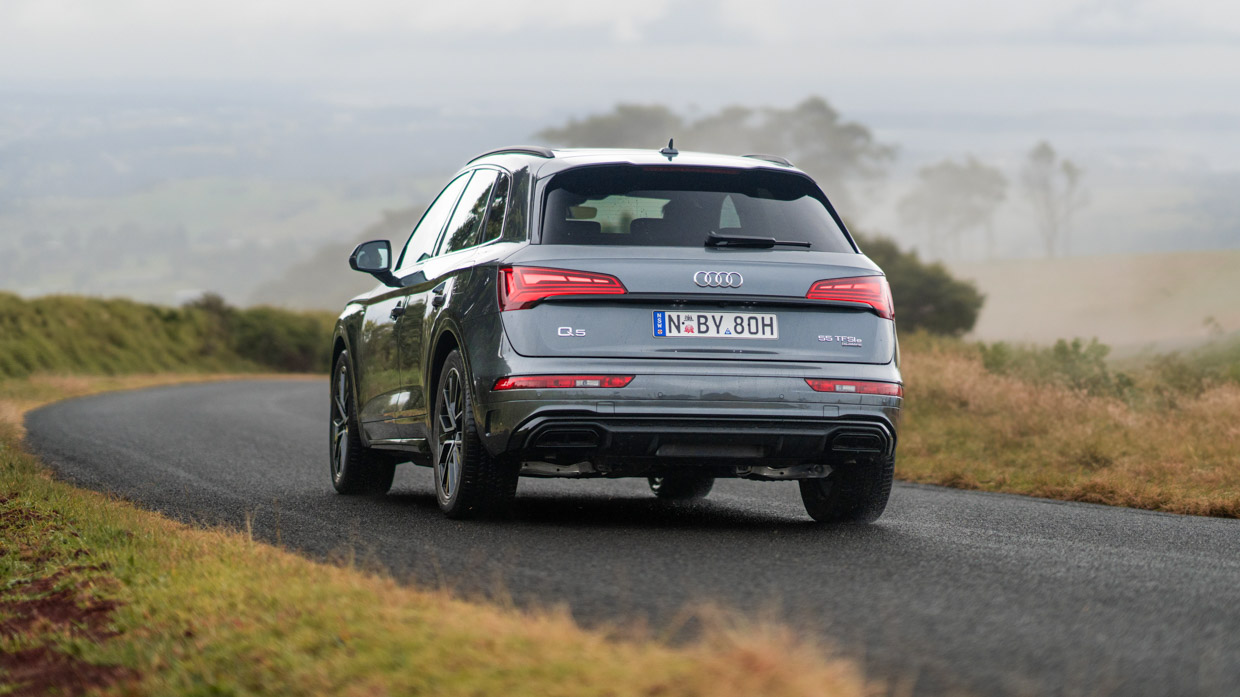
Is that enough? Well, Audi reckons the average Australian only travels 35km per day, putting it comfortably within the bounds of its claimed capability for a good many urbanites.
In an ideal sense then, this Q5 55 TFSIe promises a lot, but it’s a promise you’re paying $20k to buy into and that’s a hard bargain to argue from the get-go.
Even still, has Audi pulled it off? In many ways, it has.
The Q5 55 TFSIe is available in both a wagon and Sportback body styles and for the most part, the pair share the same standard equipment, such as the following highlights:
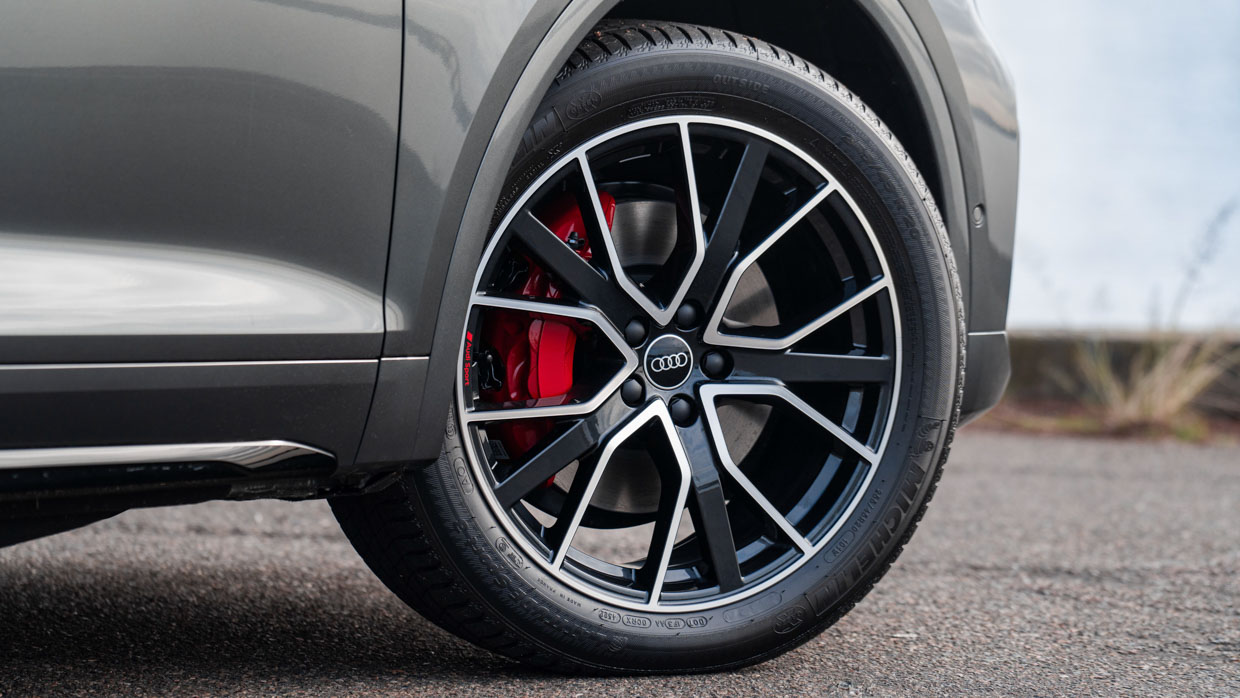
The wagon variant is fitted with a set of LED headlights and tail lights as standard, and leather upholstery inside the cabin. For the extra spend, the Sportback comes with Matrix LED headlights and the sweeping dynamic tail lights as standard.
Buyers can also opt for the Technik package on both, which costs $4900 on the wagon and adds:
The Sportback pays a bit less at $4700 and adds:
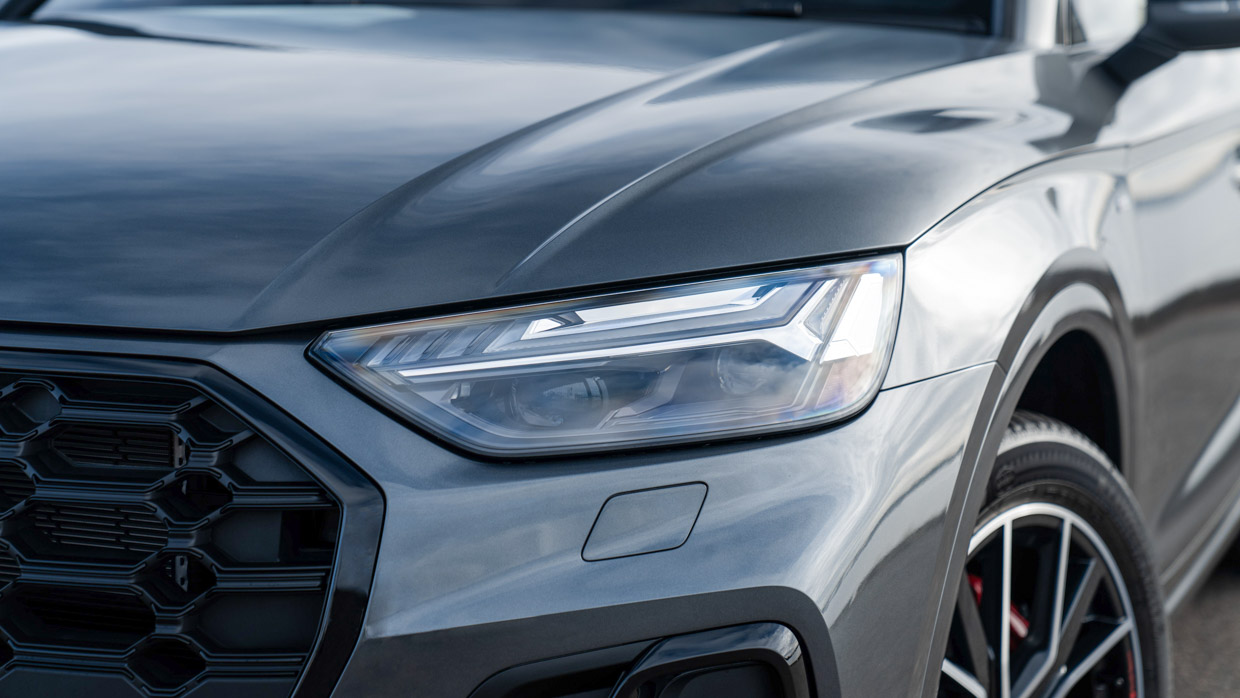
Audi also offers the ability to add air suspension for $4400 ($4000 on Sportback) that swaps out the passive damper setup. Metallic paint is $1990 extra.
Looking at this package overall, the Q5 55 TFSIe is well specified but so it should be at this price and it’s disappointing to see a basic feature like a head-up display locked behind a pricey package. Air suspension, too, could be a bit cheaper.
Fundamentally, plug-in hybrids have to be some of the most complicated drivetrains out there and it’s easy to get overwhelmed by all the data and settings, but there are really only two modes that matter: EV and Hybrid.
The latter is the default option, when it uses both the available power in the 14.4kWh (usable) battery and the 2.0-litre turbocharged four-cylinder engine in unison.

In a rather clever touch, when used with Audi’s inbuilt navigation system, the Q5 will deploy each drivetrain in areas they perform best along your selected trip. For example, the battery charge will be withheld until you reach urban areas, while the highway leg will be handled by the petrol engine. Very clever stuff.
Unlike the Outlander or Lexus NX 450h+ PHEVs, which mount a motor on each axle, Audi has placed its 105kW/350Nm electric between the engine and the seven-speed dual-clutch transmission.
Working together with Volkswagen Group’s ubiquitous 195kW/370Nm ‘EA888’ engine, the system produces a total output of 270kW and 500Nm, making it the most powerful Q5 ever – yes, even more so than the SQ5.
However, it’s not quicker in a straight line, clocking in at 5.3 seconds versus 5.1 for the SQ5, but it’s damn close and it’s worth noting that it can do so, even on a flat battery.
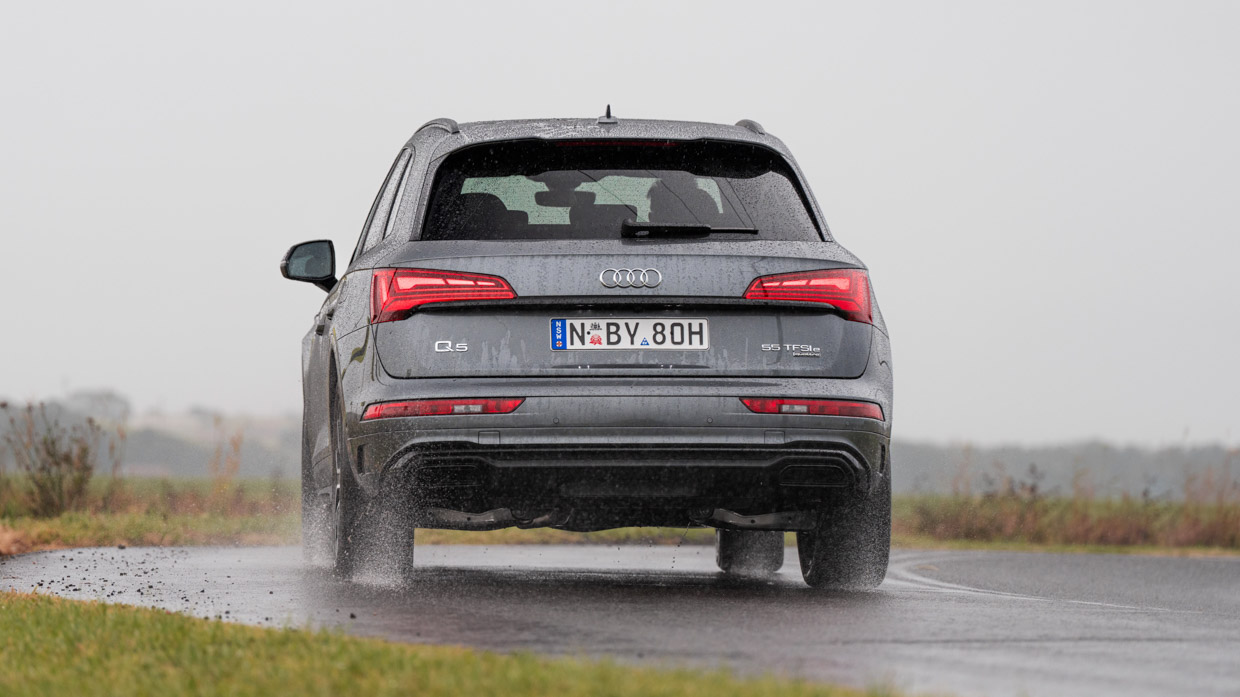
I can’t speak for the differences in handling having not driven the SQ5 myself, but the firecracker performance on tap is both delightful and assuring for a family car, allowing you to accelerate out of a tight spot if the need arises.
Clocking in at 325kg heavier than the 45 TFSI wagon, the 2150kg Q5 is by no means a featherweight, but unlike some other PHEVs the added weight doesn’t cripple the suspension or ruin the weight balance.
Regarding the latter, the PHEV variant actually improves the balance, with a 15 percent swing to the rear axle; providing a ratio of 64:36 front to rear. The result is an SUV that feels stable at high speeds and isn’t upset by sudden movements and inputs – say, when jinking to dodge a pothole.
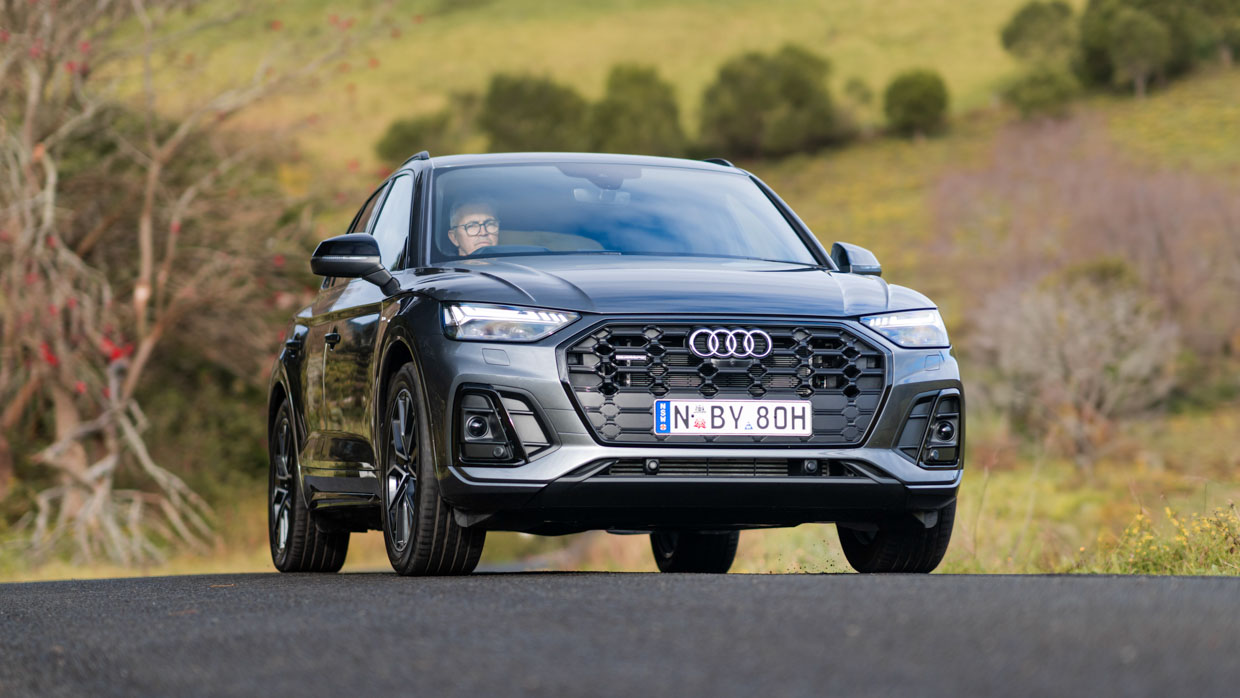
Pitching the Q5 55 TFSIe around a corner was far more delightful than I was expecting, with the sure-footed chassis combined with the surge of instant electric torque that’s followed by turbocharged shove that results in a car that kept on giving until the sensible part of my brain kicked in and backed out of the throttle.
But at urban speeds, particularly below 60km/h and set in hybrid mode, it’s remarkable how well the Q5’s electric and petrol power units work together, handing the responsibility to motivate the car back and forth like Japanese businessmen exchanging gifts.
Having driven a great deal of hybrid cars with naturally aspirated hybrid engines, it was also remarkable to hear just how hushed the cabin was with turbo petrol power, the unit rarely going above 2500rpm, even when I placed the Q5’s battery in ‘charge’ mode while driving it through the hills.
This quiet confidence is likely due to the fact the 195kW/370Nm turbo two-litre is quite peppy; for reference the Volkswagen Golf GTI and Cupra Leon VZ hot hatches use this same EA888 unit in a milder 180kW/370Nm state of tune.
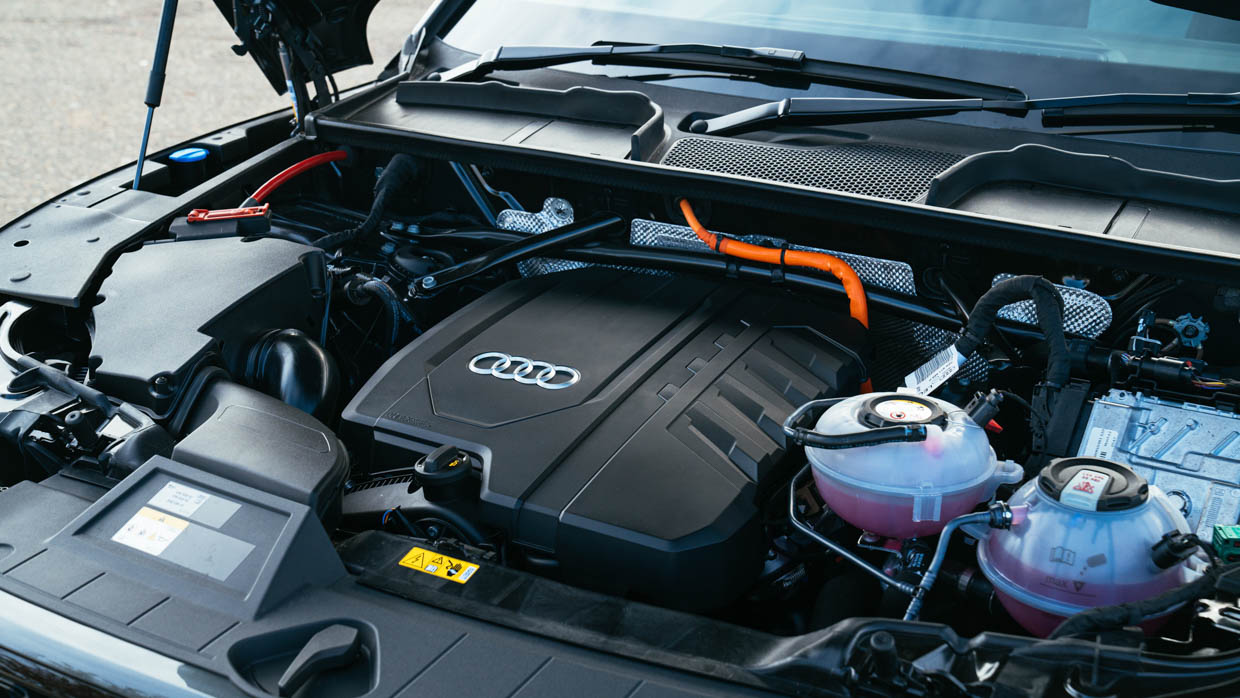
Place the Q5 55 TFSIe into ‘EV’ mode and two things happen. The first is it gets even quieter and the second is you do lose a bit of grunt.
Even still, this mode will likely be reserved for city areas where the electric motor’s 350Nm of torque is far more relevant while the 105kW is certainly enough to get the Audi out of its own way.
We sampled two different versions of the Q5 PHEV during our drive, one with the standard-fit passive suspension setup and the other with the optional $4400 air suspension.
The former was surprisingly compliant despite having a two-tone beast to carry, wearing 20-inch wheels, and while I did notice a few awkward bumps here or there, the overall experience was pleasant.
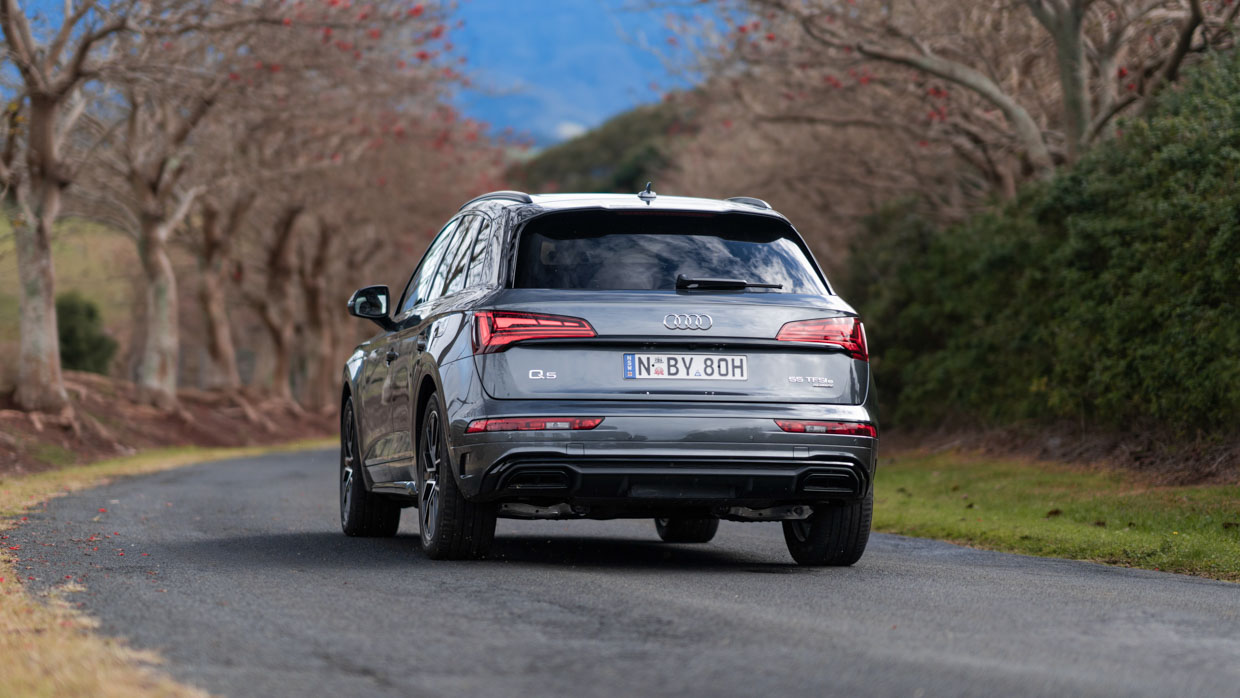
Even still, the air suspension-equipped vehicle did offer a step up in almost all areas, while also dialling in the handling when the car is put in ‘Dynamic mode’. It’s not a cheap option, but it helps bring the Q5 closer to the six-figure driving experience you’re paying for.
We’ve yet to test the braking distance but Audi has made a solid effort to compensate for the added heft of the PHEV by fitting six-piston brakes up front and two piston callipers at the rear, which is proper high-performance spec.
For those interested, the towing capacity remains capped at the same 2000kg limit as the 45 TFSI, which is a nice tick for the breadth of usability.
If you’re looking for signs that the Q5 is heading towards the end of its lifecycle, the interior is probably the best place to start. But in terms of usability, it remains among the best.
Delightfully rewarding physical buttons remain an Audi specialty, including a new one for this model labelled ‘EV’ to help you cycle through your various drive modes.
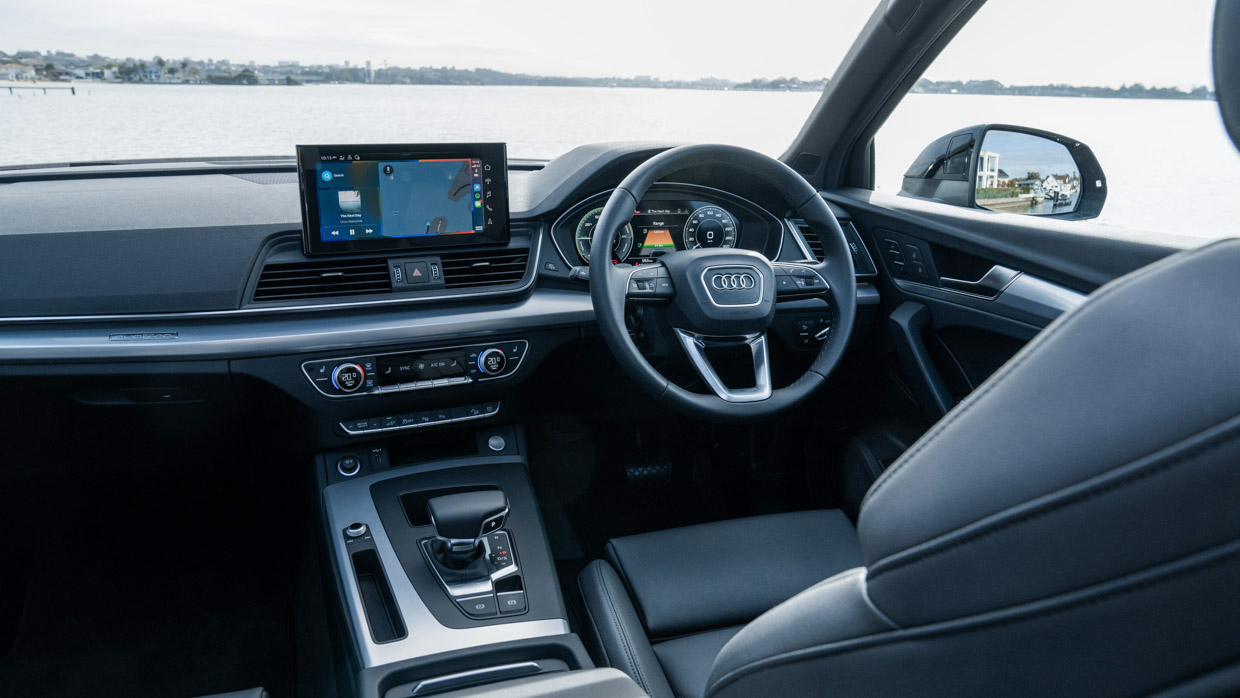
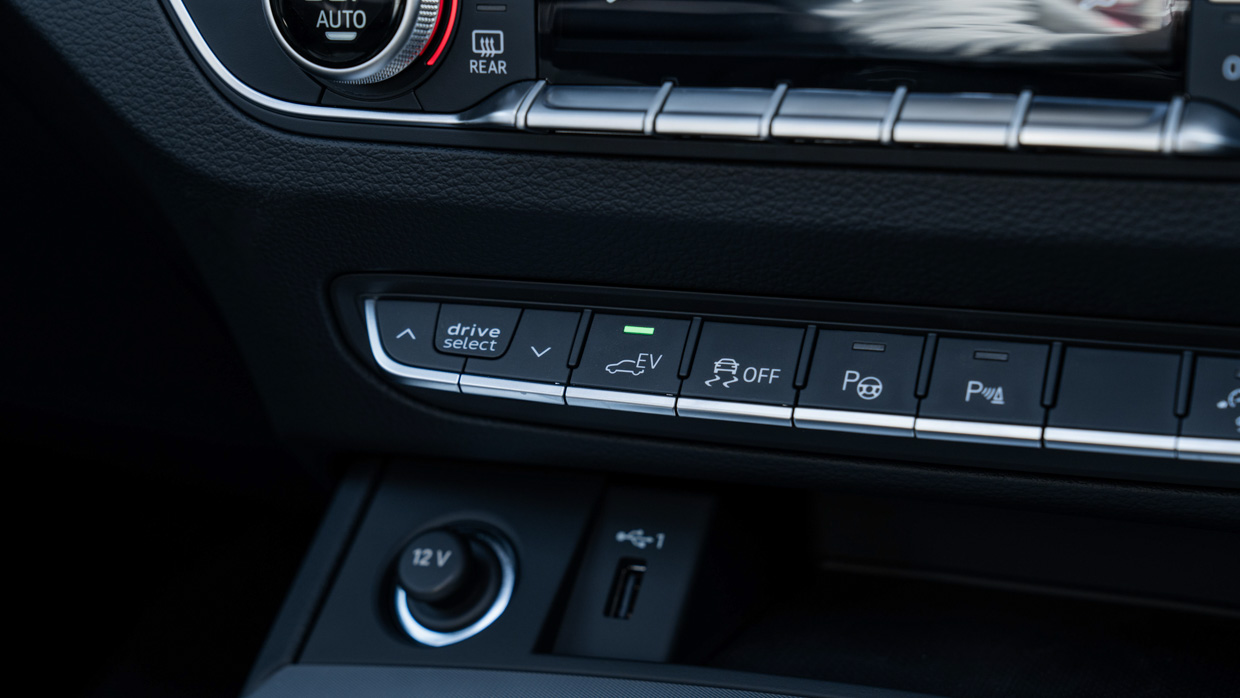
Cabin visibility is solid, as is the driver’s seating position with leather upholstery fitted as standard across the cabin, with power adjustment for both front occupants appreciated, especially the four-way lumbar support to fine-tune the supportive shape of the seats.
Notably, the Sportback models also score Nappa leather seat material and brushed aluminium inlays around the cabin as standard.
A wireless phone charger is fitted under the armrest and there are several little square notches designed to store something but I’m not entirely sure what. Perhaps keys, foldable glasses or a rounded one-litre milk carton?
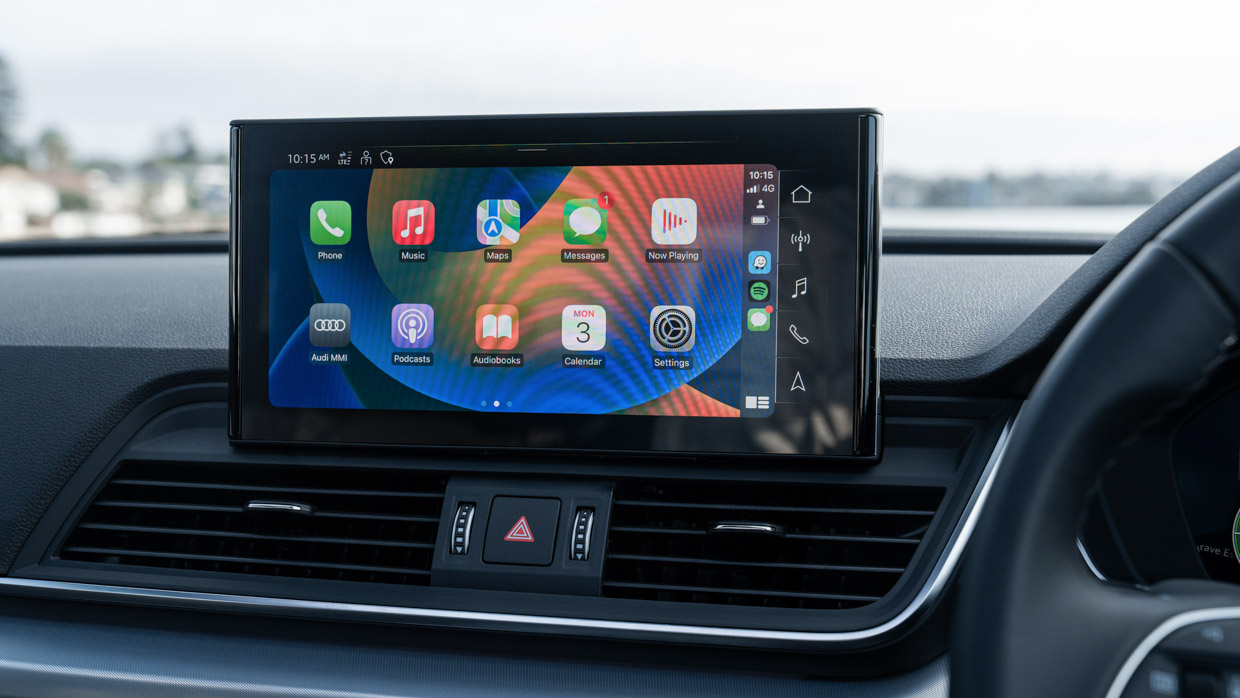
Audi’s 10.1-inch multimedia unit may be considered ‘small’ by some rivals and lacks a no-nonsense physical controller like BMW’s iDrive unit, but the screen is crisp, responsive and Audi’s operating system is tried and tested.
Wireless Apple CarPlay and Android Auto both work well and direct your tunes through a 180-watt 10-speaker standard stereo setup, which sounds just fine if lacking a little clarity once you click the volume knob up a few notches.
Wagon buyers can opt for the $4900 Technik package that bundles in the 19-speaker 755-watt Bang & Olufsen 3D sound system that does take audio quality to the next level. Clarity is improved and, essentially, you can hear more music from a lower volume – though it lacks the ‘wow factor’ of some of Audi’s high-end stereos in models such as the Q7 and Q8.
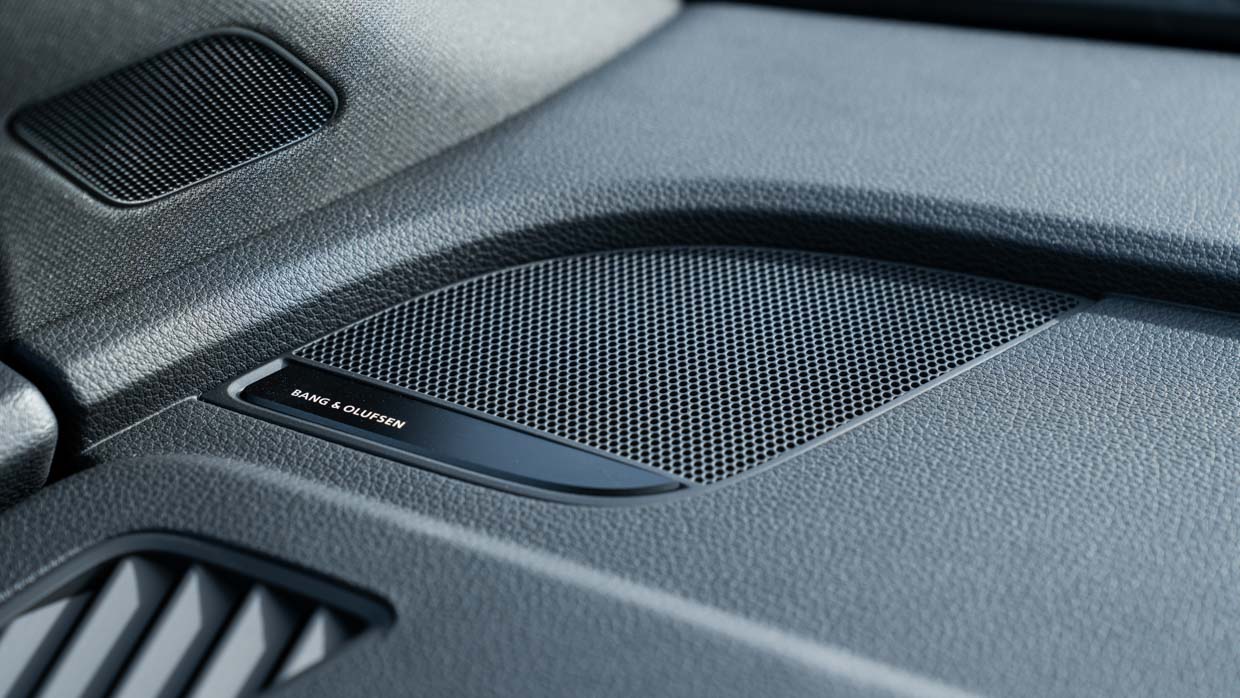
Disappointingly, a head-up display is not standard and is bundled into this pricey package on an already quite pricey car. In a nation littered with speed cameras and with 270kW at the ready, this would be a beneficial feature to have standard.
With the battery placed in the boot area rather than under the floor row-two packaging is uncompromised, so rear occupants have the space to stretch out, with a remarkable amount of room considering the relatively compact exterior dimensions.
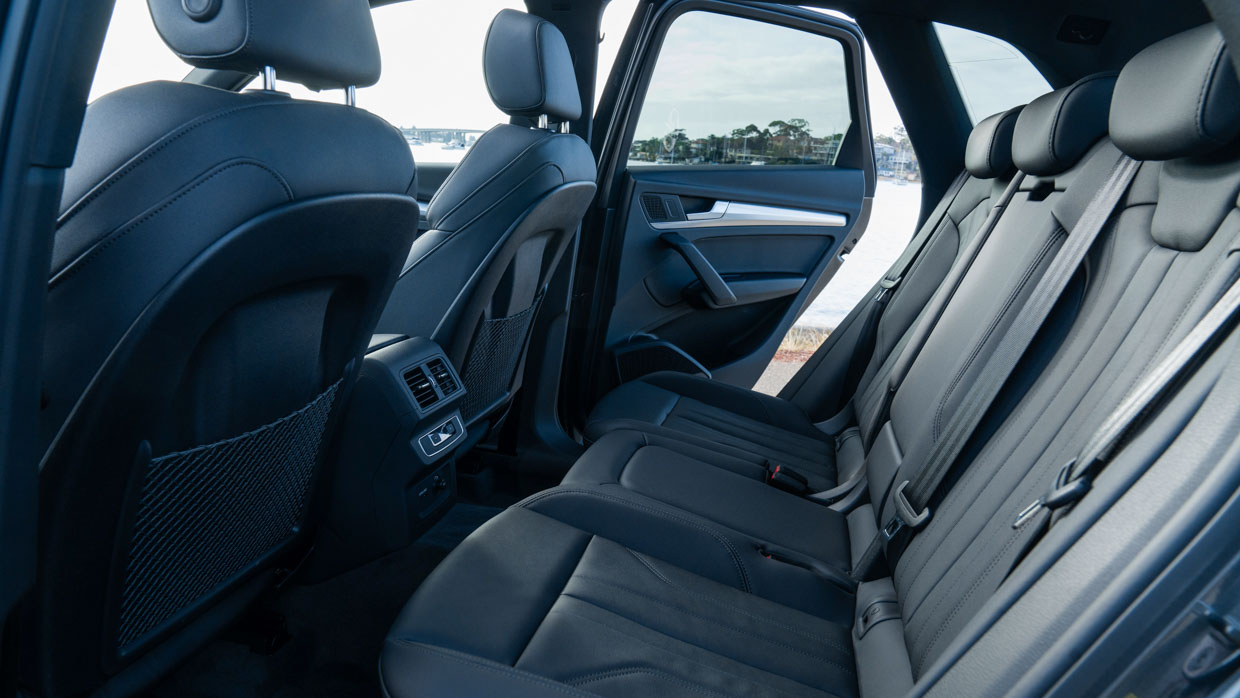
Although best left to a two-person proposition, the rear seats can slide forward and back, plus the leg and toe room is solid and will be suitable for families with older children.
Basic amenities include a fold-down armrest, three-zone climate control and two USB-A charging points. It would be great to see some standard-fit sunshades but the rear privacy glass picks up some of the tab here.
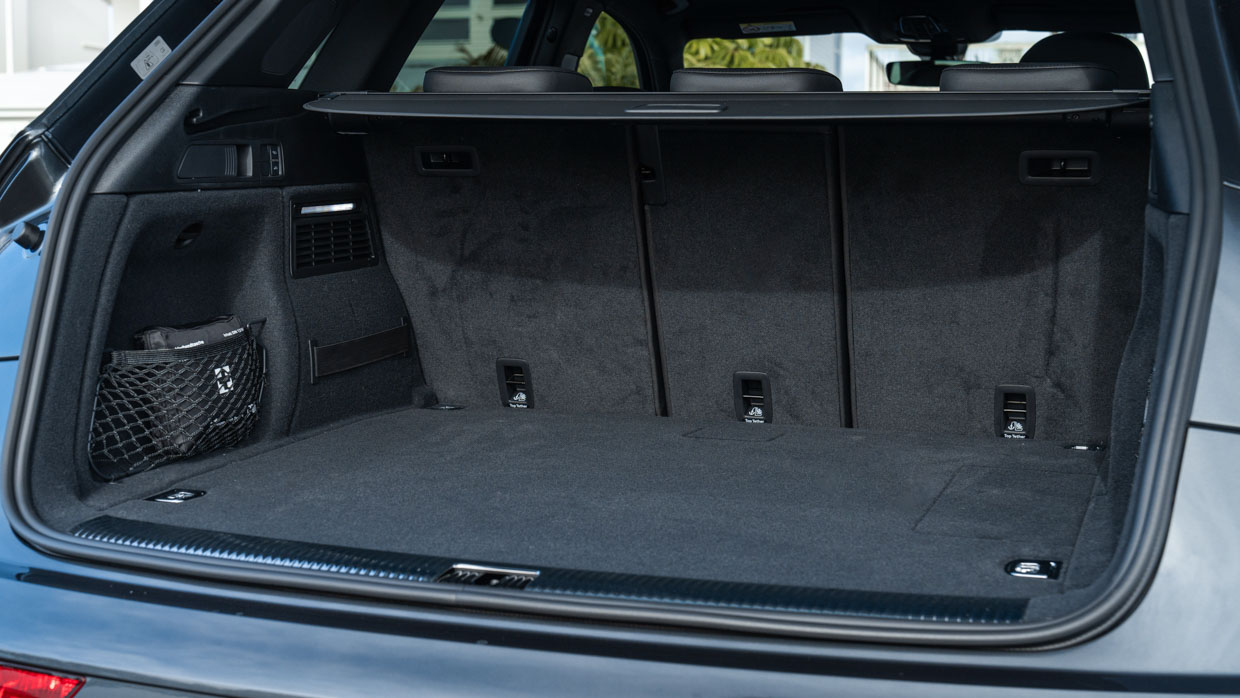
The 465-litre boot is down in terms of size compared to the 45 TFSI (520 litres), which essentially equates to a loss of around 50mm in height. The battery pack also means there’s no chance of a spare wheel either.
Tie-down points, usable depth and a wide opening mean this boot space is still quite usable and air-suspension-equipped versions gain the ability to raise and lower the height of the vehicle which can aid in lifting heavy items in and out.
As it currently stands, the Q5 55 TFSIe is the only variant not covered by ANCAP’s official five-star rating that dates back in June 2017 under more lenient testing criteria than what newer cars go through.
But even that overarching rating will soon disappear come December 2023, when the rating is due to expire.
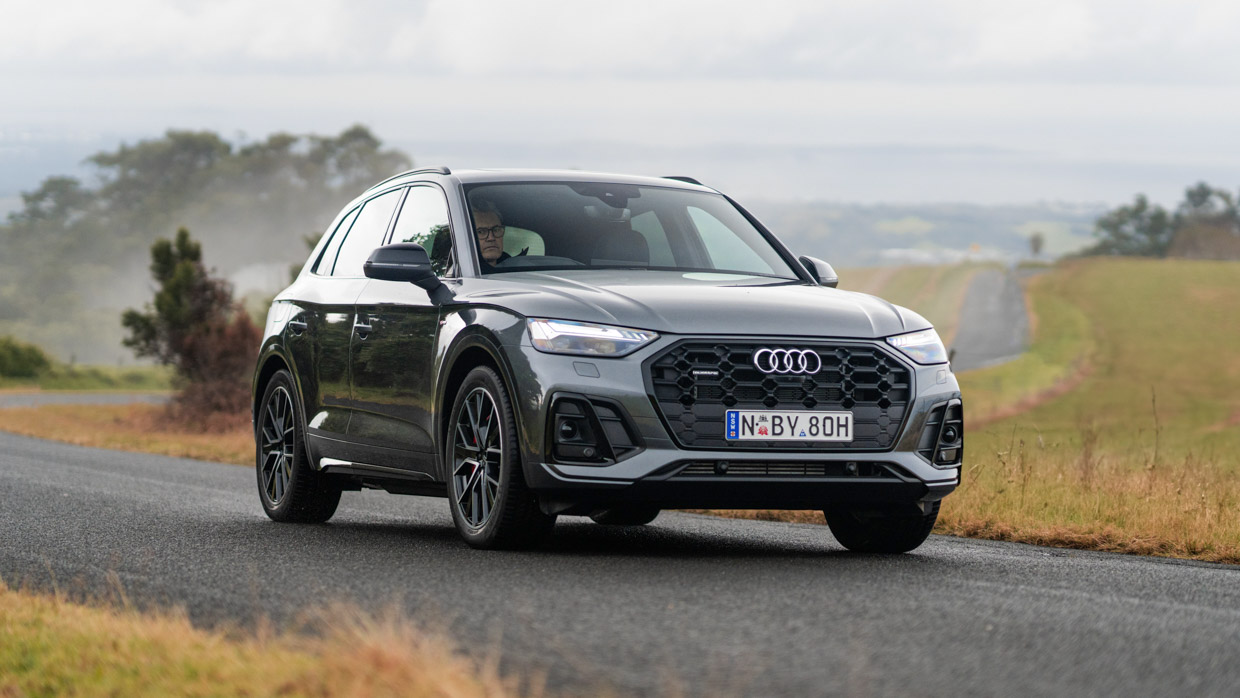
Compared to newer rivals the Q5 55 TFSI also misses out modern innovations such as a front-centre airbag, a technology designed to stop front passengers colliding during a side-on collision.
Other features include:
Audi also includes its pre-sense rear technology which flashes the tail lights repeatedly when traffic is approaching you quickly to alert the driver. There is also a first aid package included, which is handy.
The officially quoted WLTP combined consumption figure for the Q5 55 TFSIe is 2.0L/100km, but this number can be a bit misleading as it assumes that you’re starting your trip with a full battery and recharging it fully every 100 kilometres.
With the battery flat Audi Australia says drivers should expect around 4.5L/100km on the highway and 6.5L/100km in urban areas. It was hard to gauge how accurate this claim was in our short first time but we saw the following figures in these driving conditions.
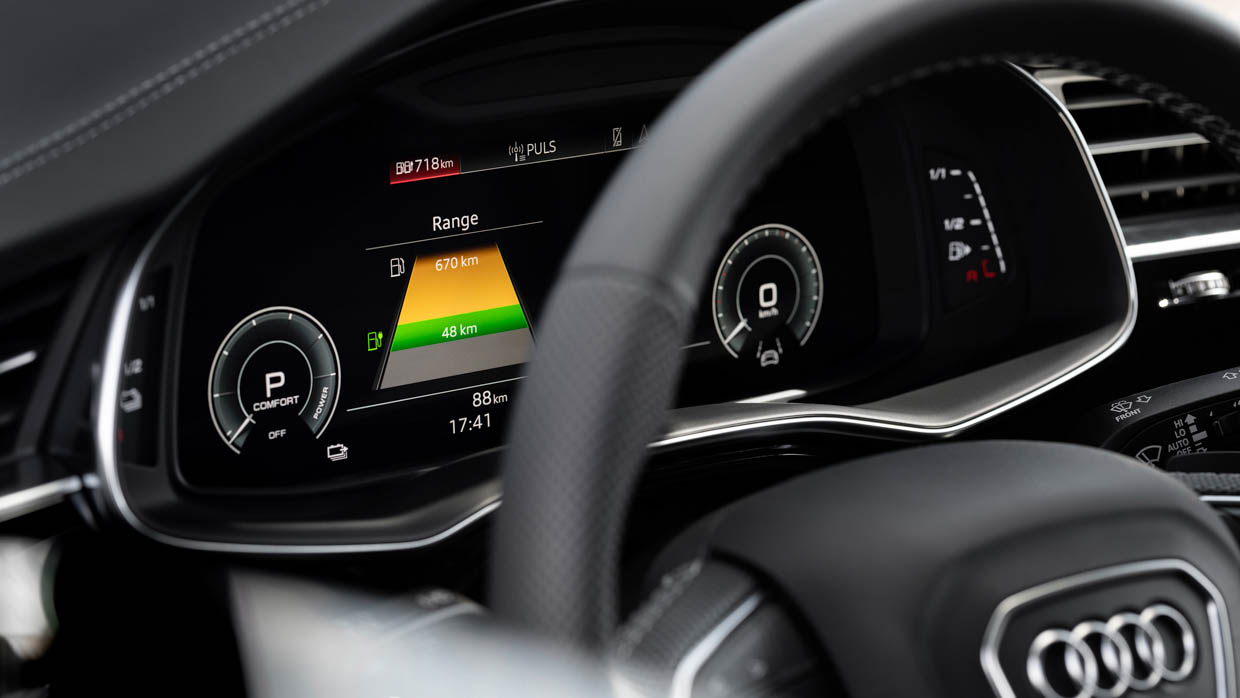
Finally, in ‘EV mode’ where we were just using electric power, we saw 21.3kWh/100km in a mix of conditions – actually beating the official claim of 23.9kWh/100km.
And when that battery goes flat? Well, buyers can top up the battery via an AC charger at speeds of up to 7.2kW, quick enough to recharge the battery in 2.5 hours. Sadly though, there is no DC fast charging capability if you want to grab a quick zap to ease your fuel use when out on the open road.
Like any Audi, the Q5 55 TFSIe is covered by a five-year, unlimited-kilometre warranty with an eight-year, 160,000km warranty applied to the battery and other related EV components.
In terms of servicing cost, buyers will pay $3520 over five years and 75,000km with intervals of every 12 months or 15,000km.
So often it seems that when it comes to plug-in hybrid vehicles we come away very impressed with the car that we are presented with, and yet the large price tag ultimately makes it a difficult proposition to justify..
Given our initial figures, we think it’s likely that buyers will see an average efficiency of around 7.5L/100km when driving on a flat battery. So how does that compare to the 45 TFSI variant (9.0L/100km observed previously) if you either never charge your Q5 or only charge it occasionally?
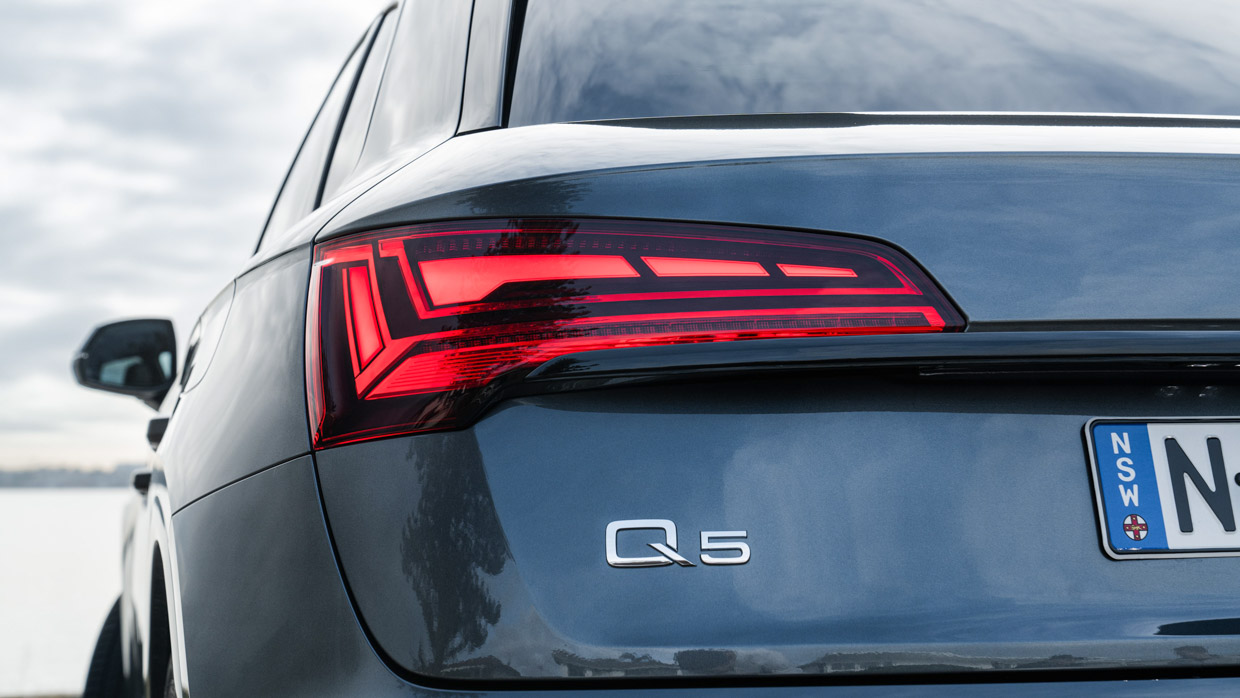
Assuming an annual driven distance of 15,000km, our as-tested efficiency of 21.3kWh/100km a petrol price of $2 per litre and a charging cost of $0.30 per kWh, it would take nearly 45 years to make up the $20,100 difference, or 15.3 years if 10,000 of those kilometres driven were powered by your home electricity supply.
Clearly then, as a buyer in these circumstances, you’re unlikely to see huge running costs benefits that would make up the huge price premium, though there are some factors that could tip things in your favour.
The first is being far more diligent with your charging at home, which is good in theory but with such short range you’ll have to do it often. The second is the reasonably high likelihood the Australian federal government could introduce emissions taxes on the purely-petrol variant which could even out the costs in the long run.
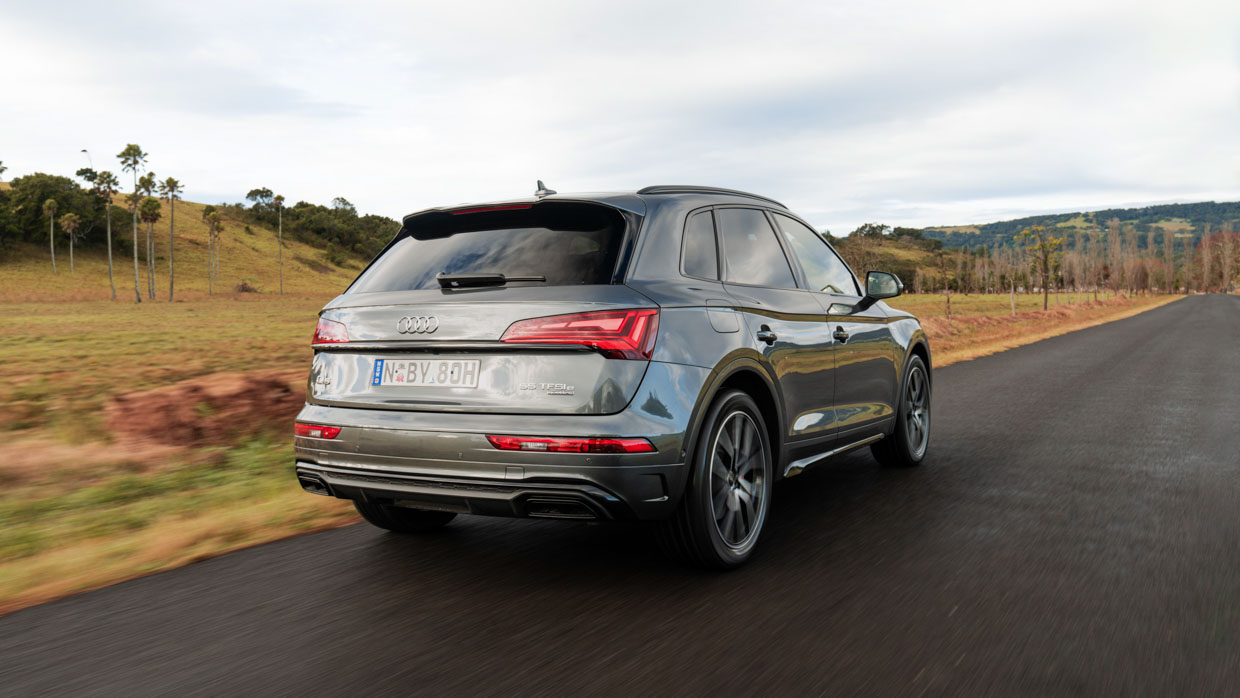
Perhaps in some ways the Q5 is its own worst enemy because the regular petrol and diesel engines are just so efficient. In fact, the 35 TDI has an official combined consumption of just 4.8L/100km.
Even still, these figures are far more impressive than we’ve seen from other PHEVs in the past and I can honestly say that in terms of the driving experience, the Q5 55 TFSI is the best hybrid I’ve ever driven.
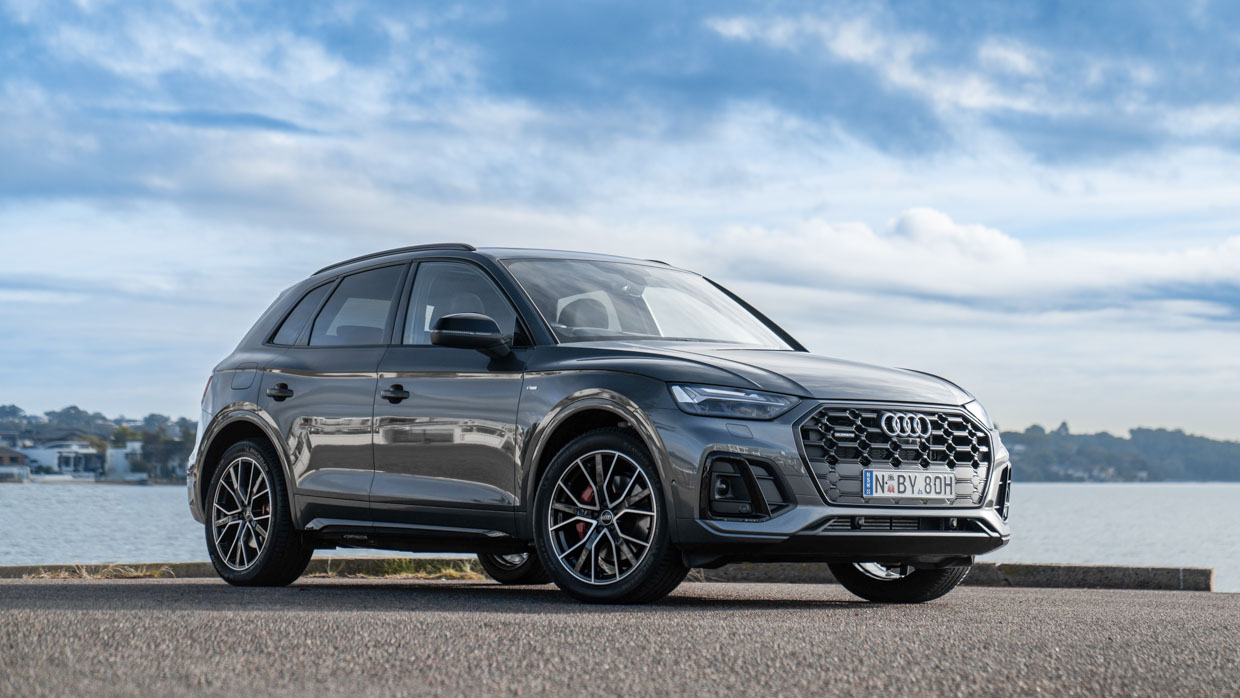
It’s quiet, well-tuned and incredibly refined to say nothing of the comfortable suspension and amble level of performance; with the electric motor supported by a beefy turbo four-cylinder engine that can hold its own without any extra assistance.
So if saving money outright isn’t your goal and you simply want to reduce your carbon footprint by simply using less fuel and don’t want to deal with the range anxiety that comes with driving an EV on a weekend away, the Q5 55 TFSIe is a good option.
Just make sure it’s the right option for you.
Correction: this review previously contained an error in the calculations for the long-termer cost different between the petrol and PHEV models.
Variant tested 55 TFSI e QUATTRO S LINE PHEV
Key specs (as tested)
About Chasing cars
Chasing Cars reviews are 100% independent.
Because we are powered by Budget Direct Insurance, we don’t receive advertising or sales revenue from car manufacturers.
We’re truly independent – giving you Australia’s best car reviews.
The estimate provided does not take into account your personal circumstances but is intended to give a general indication of the cost of insurance, in order to obtain a complete quote, please visit www.budgetdirect.com.au. Estimate includes 15%^ online discount.
^Conditions Apply
Budget Direct Insurance arranged by Auto & General Services Pty Ltd ACN 003 617 909(AGS) AFSL 241 411, for and on behalf of the insurer, Auto & General Insurance Company Limited(ABN 42 111 586 353, AFSL 285 571).Because we don’t know your financial needs, we can’t advise you if this insurance will suit you. You should consider your needs and the Product Disclosure Statement before making a decision to buy insurance. Terms and conditions apply.
Indicative quote based on assumptions including postcode , 40 year old male with no offences, licence suspensions or claims in the last 5 years, a NCD Rating 1 and no younger drivers listed. White car, driven up to 10,000kms a year, unfinanced, with no modifications, factory options and/or non-standard accessories, private use only and garaged at night.
^Online Discounts Terms & Conditions
1. Discounts apply to the premium paid for a new Budget Direct Gold Comprehensive Car Insurance, Third Party Property Only or Third Party Property, Fire & Theft Insurance policy initiated online on or after 29 March 2017. Discounts do not apply to optional Roadside Assistance.
2. Discounts do not apply to any renewal offer of insurance.
3. Discounts only apply to the insurance portion of the premium. Discounts are applied before government charges, taxes, levies and fees, including instalment processing fees (as applicable). The full extent of discounts may therefore be impacted.
4. We reserve the right to change the offer without notice.